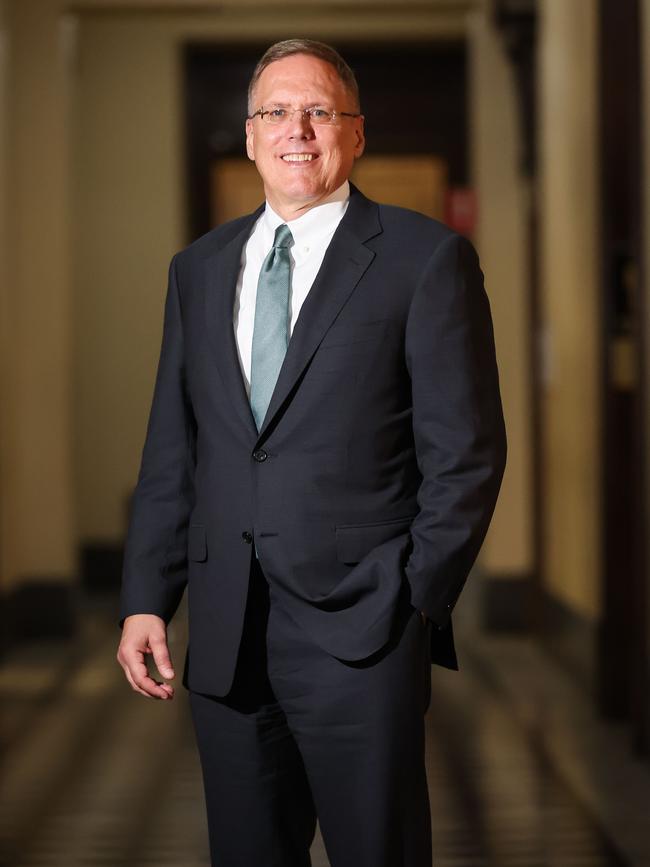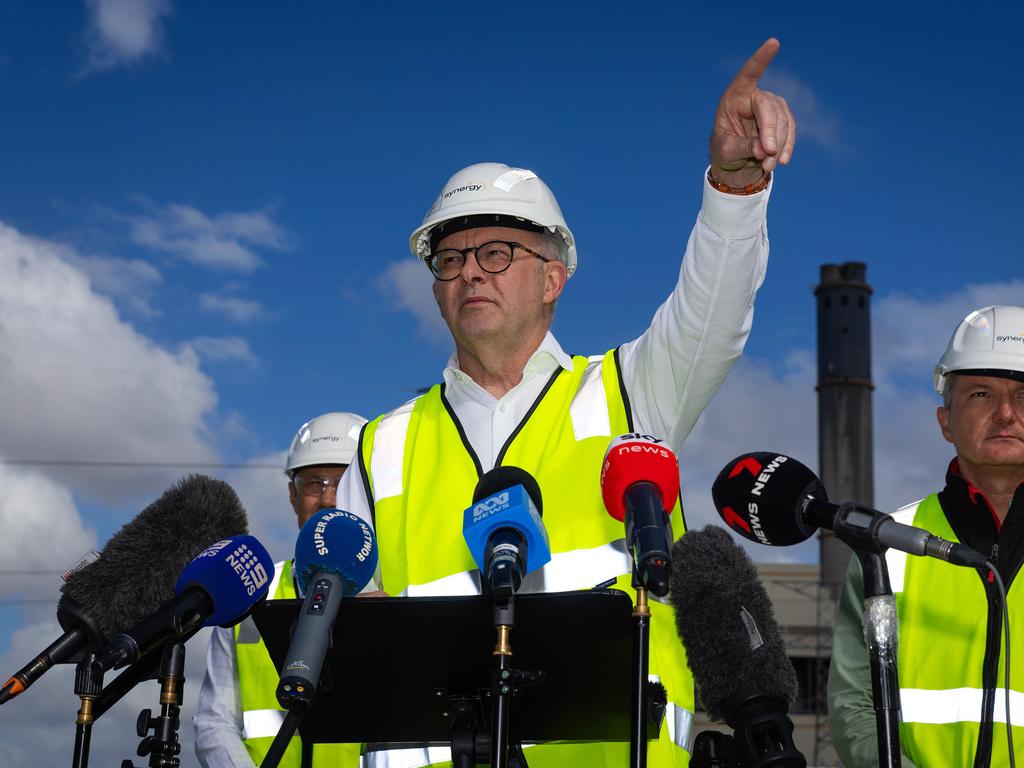Alcoa boss flags extension for Portland aluminium smelter ‘if cheap power is available'
A plan to keep the Portland aluminium smelter open beyond the next decade rests on finding cheap energy, Bill Oplinger, the global CEO of Alcoa, says.

Alcoa says keeping its Portland aluminium smelter in Victoria open beyond 2035 will hinge on securing a competitively priced electricity deal, while dismissing green hydrogen as a potential energy source for its Australian operations.
The smelter was threatened with closure twice over the past decade, with the federal and state governments tipping in funds to help the facility recover from a power outage followed by a $155m subsidy deal also shared between governments.
Portland then locked in a nine-year deal with AGL Energy securing the smelter operations out to mid-2035 and Alcoa chief executive Bill Oplinger said any extension would require competitive contract terms for its energy supplies.
“It’s around cost. We’ve got power contracts through 2035 and as we approach 2035 we will have to work through whether we can get sustainable, low-cost energy again at that point,” Mr Oplinger told the Melbourne Mining Club.
“I’m always hopeful. I always want to keep our plants operating and there’s a lot of time for things to change.”
Alcoa has previously said about 40 per cent of the smelter’s electricity comes from renewable sources, such as the nearby Portland wind farm, and it also has a memorandum of understanding in place with the onshore Kentbruck Green Power Hub and another with Alinta Energy to collaborate on the proposed Spinifex offshore wind farm.
The smelter produces about 18 per cent of the nation’s aluminium and has the capacity to provide grid stability, an important feature when supplies in the nation’s electricity system are strained.

The Alcoa boss said he was open to nuclear as a back-up fuel source for its operations, while noting cost concerns.
“I think nuclear in the mix of energy sources makes a lot of sense, and I think that it will take time to build out, sometimes, depending on the regulatory situation. It could be expensive, but I do think as a firming source nuclear makes sense.”
Still, the metals chief was dismissive of the potential of green hydrogen, hyped by many developers as a significant energy source to help the economy hit net zero goals.
“I’m not focused on it. I haven’t found that hydrogen is anywhere close to being economic enough to do anything with. We are heavy natural gas users in Western Australia. We’re looking at other sustainable sources of energy, but hydrogen for us is not there,” Mr Oplinger said.
Australia’s green hydrogen industry has failed to fire, punching a hole in Anthony Albanese’s aim to develop a major export industry by 2030 and meet net zero goals.
Some 99 per cent of the announced capacity of projects has not progressed beyond the concept or approval stage, with less than 30,000 tonnes a year reaching a final investment decision or starting construction, according to Rystad Energy.
Nearly 100 hydrogen projects have been proposed in Australia, with the vast majority based on green or renewable sources.
Alcoa last year mothballed its Kwinana refinery in Western Australia due its age, scale, high operating costs and current bauxite grades and tough markets.
The Kwinana refinery has an annual nameplate production capacity of 2.2 million tonnes but has been operating at approximately 80 per cent of its nameplate capacity since January 2023.
The company had placed the “marginal asset” with 1200 workers under review in 2023 and a decision to end production has been expected by investors and the local community for years.
Alcoa’s comment on Portland comes as renewables accounted for 46 per cent of electricity in the grid in the last quarter of 2024, according to figures from the Clean Energy Regulator, meaning the nation must double that share in the next five years to hit its target.
A Labor electoral win on Saturday would see Australia add a record 7.2GW of both renewable energy and gas to its grid annually, but that would still leave a gap by 2030 of 15GW-20GW of wind power.
Chiefs in the infrastructure and energy sectors in February cautioned Labor’s 82 per cent green power target was unrealistic and coal-fired power stations must stay open.
However, the Albanese government slapped down business pleas to reconsider its renewables-only strategy and said it would be listening to “experts”.
An overwhelming majority of Australians support more renewables being built, a report from the country’s peak zero emission representative body found earlier in February. Nearly 70 per cent of respondents supported building new renewables.
Federal Labor’s Capacity Investment Scheme would see taxpayers underwrite 32 gigawatts of capacity.
The Australian Energy Market Operator estimates the nation needs 57GW of grid-scale solar and wind generation capacity to be installed by 2030 – a rise from the current capacity of 19GW.
The Clean Energy Council’s database has 88 renewable electricity generation projects which have either reached financial commitment or were under construction, representing 13.2GW of capacity in the pipeline. There were also 52 committed storage projects in development, with 10.5GW in capacity. These projects represent at least $36.5bn worth of capital investment.




To join the conversation, please log in. Don't have an account? Register
Join the conversation, you are commenting as Logout